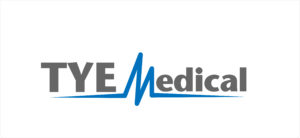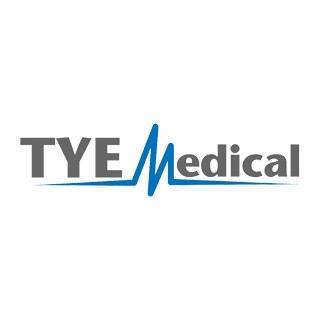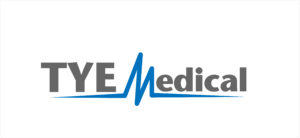Live to Be 100 with These Key Habits
Tye Medical Incontinence Products
Oct 08, 2024
Florida - Sarasota, Bradenton & Charlotte Counties
Email US
Click to Email UsWhat can you do if you want to live to be 100? It’s more than just good genes and luck (although they certainly help). Your longevity isn’t entirely random. Certain habits can add years to your life (or subtract them). If you want to join the “centenarian club,” it may only take a few adjustments. A new study highlights key habits that increase that maximize your time on earth and decrease health risks that could detract years. Even more interesting is that it doesn’t seem to matter whether you’re young or old, implementing these habits now can help you live to be 100. The research focused on those who were 80 and above. So, here is the scoop on living longer, even if you think it’s too late.
1. Get Regular Exercise

Exercise is the most important factor in living to age 100 or extending your life as much as possible, increasing your odds by 31 percent. Any amount of activity helps, but it’s best to shoot for moderate exercise for 30 minutes, five days per week.
It’s generally recommended that at least two of these sessions are strength-training and the other days cardio. If only three days a week works for you, then incorporate that into your schedule. If you don’t think you can maintain a strength-training routine, then stick to cardio. The idea is that you keep your body moving, prevent disease, manage weight, and prolong life.
2. Don’t Smoke

Perhaps this is obvious, but smoking will only subtract years from your life. In fact, you have a 25 percent higher chance of becoming a centenarian if you’ve never smoked. But stopping is still worth it, adding years to your life in most cases. Carcinogens in cigarettes and related products dramatically increase cancer risk and the likelihood of developing lung diseases and other health problems that impact longevity.
3. Eat Mostly Vegan

The key here is the word “mostly,” which means you are eating a plant-based diet but may have very limited amounts of dairy and meat. Fish is limited to a maximum of three times per week with a focus on varieties high in Omega fats like salmon, cod, trout, shrimp, clams, sardines, and anchovies. Dairy is consumed sparingly as is poultry, pork, and red meats.
Eating mostly plant-based foods can reduce disease-causing inflammation, because produce is rich in antioxidants and inflammation-fighting nutrients. These diets are also high in fiber, which keeps inflammation at bay. On the contrary, dairy products and meats are known to trigger inflammation and are often consumed regularly and in larger quantities.
It’s best to increase plant-based food until you find a level of comfort that is sustainable. There is no need to make drastic changes that you can’t maintain over time. Find your threshold and begin implementing more produce and less meat and dairy. Doing so will increase the likelihood of seeing your 100th birthday.
4. Eat Less Protein
This advice might sound strange since everywhere we’re told to eat more protein to lose weight, prevent diabetes, and maintain muscle mass. This is all true but exactly how much protein you need should be well defined. If you are under 65, you don’t need to go all-out on protein. In fact, it’s not recommended if you want to extend your life.
What does a “low” protein intake look like? For younger folks, it means eating between 0.31 and 0.36 grams of protein per pound of body weight. So if you weigh about 130 pounds, you’ll need 40-47 grams per day. If you’re about 200 pounds, you’ll need 60-70 grams per day. So, it’s not exactly low in the sense of foregoing protein at meals. But it does mean that loading up with more than this isn’t exactly healthy. More isn’t always better. Don’t make all your meals about protein. You may find you’re consuming far more than you need.
But after age 65, you should push this limit a bit more and eat more lean protein than when you were younger. It’s common for your appetite to be less, but be sure you’re still getting the protein you need. Lean protein includes eggs, beans, nuts, and legumes. Dairy also works, but if you want to maintain a plant-based diet, look for protein-rich plant-based products. You can also try sheep or goat milk products that can provide protein with fewer inflammatory effects.
5. Minimize Saturated Fats

This will naturally be the case if you’re following a plant-based or vegan diet. Saturated fats are primarily contained in animal products like meats (especially red meats), dairy products, and many processed foods, especially baked goods and snack foods
Minimizing saturated fats not only helps your waistline, it keeps your cholesterol and blood pressure down. High cholesterol and blood pressure cause many age-related diseases like heart disease and diabetes. These common illnesses seriously impact longevity.
6. Eat Whole Grains and Reduce Sugar

Choose whole grains over food products made with heavily processed white flour. This extends your life by reducing the likelihood of obesity, diabetes, and related diseases. Whole grain food products are less processed, leaving most of the edible parts of the grain intact. Not only do you derive nutrition and fiber from these whole grains, you also digest them more slowly, giving your body time to break them down into sugar gradually.
Your body easily digests processed white flour and rapidly outputs into your bloodstream as sugar, ultimately causing weight gain and diabetes over time. This is no good if you want to live to see your 100th year.
Rapid Aging in Your 40s and 60s

Two rapid bursts of aging happen in a human lifespan. One occurs at about age 44 and the other at about age 60. Science calls these periods “major biomolecular shifts” that can seriously impact health. These times of rapid aging mark points of dramatic change in your mid-forties and early sixties, especially in the latter.
In your sixties, your immune system declines which means you’re more susceptible to cancer and infections. You also have a greater chance of developing heart disease during this time, as high blood pressure and cholesterol progress to other conditions.
A more rapid decline in your sixties isn’t surprising, but a steep decline in your forties could be concerning. It’s possible that the rapid aging in your forties is linked to lifestyle habits, as the general population has become more sedentary with diets high in saturated fats and light on nutrient-rich produce. This is also a time of high stress with higher divorce rates, family and work pressures, weight gain, and other facts that take a toll on your body.
It’s Never Too Late to Lengthen Lifespan
If you’ve hit your 40s, 60s, or even 80s, you can still take steps to reverse the aging process.
Making healthy changes now, even if you’re in your eighties, can make a notable impact on your health and length of days. Adding walking to your daily routine and improving your diet can extend your life. It’s also important to avoid gaining weight to avoid diabetes and high blood pressure.
If you’re in your 40s, you can also benefit from improving muscle mass, which means adding that strength-training into your exercise routine. And now is the time to start watching your cholesterol and minimize alcohol consumption. Your metabolism has started to slow, which means you’ll need to be more vigilant about gaining weight.
If you’ve been slow to change your lifestyle habits, it may be time to make those adjustments and still see the effects.
- To view the original version of this article visit tyemedical.com/blog/live-to-be-100-with-these-key-habits/
- Seniors Blue Book was not involved in the creation of this content.
Other Articles You May Like
Care with a Vintage Touch
Town Square University Parkway is a 1950s-themed senior center and adult day program serving Sarasota and Bradenton. Designed to look like a mid-century town, it features storefronts like a diner, theater, art studio, garage, and library that support reminiscence therapyhelping seniors, especially those with dementia, stay engaged and connected.Families consistently give FIVE-STAR reviews, praising the compassionate staff, fun environment, and the noticeable difference it makes in their loved ones lives. One caregiver shared, This program has been a godsend to our entire family.More than just a day center, Town Square offers on-site medical care, including primary care, psychiatric care, therapy services and lab workcreating a one-stop solution for families.Weekly caregiver support groups and educational events include FREE respite care. This gives caregivers a much-needed break while helping them gain the tools and resources they need to successfully support a loved one living with a cognitive impairment.With its unique setting and whole-person approach, Town Square University Parkway is transforming the way we care for seniors in our community, from $18-$21 an hour. FREE for qualifying Veterans. Visit us at 8450 Lockwood Ridge Rd, Sarasota, FL 34243, or call (941) 277-5048 to learn more.
The Benefits of Respite Stays for Seniors: Refresh, Renew, and Recharge
Aging is a journey that presents both challenges and opportunities, especially when it comes to finding the right living arrangements. Older adults and their families often face tough decisions when exploring housing options that balance independence, care, and engagement. One increasingly popular solution is the respite stay, a short-term stay that allows older adults to experience a community and its services on a temporary basis, offering all the benefits of senior living without a long-term commitment.Respite stays provide more than just a test drive for potential long-term residents; they also offer older adults a much-needed break, a chance to renew their sense of purpose, and a wonderful opportunity to explore a vibrant new lifestyle. Below, we explore the numerous benefits of respite stays, how they provide an ideal way to experience senior living, and why this approach can be such a transformative experience for seniors and their families.1. What Is a Respite Stay?Respite stays are short-term stays in a senior living community, typically lasting anywhere from a few days to several weeks. These stays offer older adults access to all of the communitys amenities, care services, and enrichment activities. Respite stays cater to a variety of needs: they serve as a break for caregivers, a transitional period for older adults recovering from illness or injury, and a chance for prospective residents to explore the community before committing to a long-term stay.This temporary stay allows older adults to experience the community and its amenities, engage with associates and other residents. Whether an older adult is simply curious about senior living or considering a permanent move, a respite stay is a great way to make a well-informed decision.2. The Many Benefits of Respite Stays for Older AdultsA respite stay is a powerful tool in helping older adults decide on a new community, but it also has distinct and immediate benefits beyond that. These include mental rejuvenation, social engagement, and physical renewal, creating an all-around enriching experience.a. A Renewed Sense of PurposeMany older adults who are aging at home feel isolated, and that isolation can lead to feelings of depression and a loss of direction. Moving into a new environment, even for a short period, introduces new experiences and opportunities to find meaning. Respite stays offer daily engagement activities, creative projects, and social gatherings that help older adults reignite their sense of purpose.At Grace Management, Inc. communities, life enrichment activities are designed to help residents tap into their passions and explore new hobbies, whether its painting, gardening, or learning something new. Being part of a community can refresh older adults perspectives and offer a boost of confidence as they reconnect with old interests or discover new ones.b. Physical and Emotional RenewalA change of scenery can do wonders for physical and emotional well-being, but a respite stay provides much more than just a different view. Guests at senior living communities enjoy access to on-site amenities like fitness centers, wellness programs, and scheduled activities that focus on physical health and relaxation. With these resources readily available, older adults can focus on their wellness goals, whether its increasing mobility, improving balance, or simply relaxing with a yoga class.In addition to structured wellness programs, many communities offer services like massage therapy, spa treatments, and relaxation spaces that contribute to overall physical and emotional renewal. These wellness opportunities support not only short-term guests but also give older adults a glimpse into how their long-term care could look within the community.c. Social Connection and BelongingLoneliness is one of the leading causes of mental health challenges among older adults, but respite stays offer the chance to forge connections with both residents and staff members. During their short-term stay, guests can participate in social events, group activities, and shared dining experiences that foster a sense of belonging. This social engagement goes a long way in improving overall mood, reducing stress, and creating lasting memories.At Grace Management, Inc. communities, older adults experience a welcoming, inclusive environment where residents and guests can share stories, make friends, and celebrate lifes moments together. The feeling of camaraderie that arises can be incredibly refreshing for seniors who may otherwise spend days in solitude. For many, the relationships formed during a respite stay lead to long-term friendships and an enhanced sense of community.3. The Practical Benefits of Respite StaysAlongside the personal rejuvenation and social perks, respite stays also provide practical benefits for older adults and their families, helping them make confident decisions about their living arrangements.a. A Preview of the Community LifestyleOne of the main advantages of a respite stay is the chance to try on the community. Older adults can experience the day-to-day lifestyle, sample the cuisine, and attend events, giving them a realistic view of what life would be like as a permanent resident.Moreover, the wide range of amenities and services available helps seniors explore various options that may enhance their daily lives, such as transportation services, in-home assistance, and health management programs. This firsthand experience helps to remove any uncertainty, allowing older adults to make an informed choice if they are considering a long-term stay.b. A Stress-Free Transition for CaregiversRespite stays are a great resource for caregivers, who often need a break themselves. Family caregivers work tirelessly to provide the best care possible for their loved ones, which can lead to caregiver burnout if left unaddressed. A short-term respite stay allows caregivers to recharge and focus on their well-being without worrying about the safety and happiness of their loved one.Knowing their family member is safe, supported, and engaged can provide caregivers with peace of mind. They can use this time to rest, attend to personal matters, or take a vacation. When caregivers are refreshed and ready to resume their role, they can continue to provide the best support possible.c. A Healing Environment for Post-Hospital RecoveryFor older adults recovering from surgery, illness, or injury, a respite stay offers a supportive and healing environment. Senior living communities are equipped to provide post-hospital recovery care, which includes assistance with day-to-day activities, medication management, and physical therapy. Respite care allows older adults to recover in a comfortable and engaging environment where help is readily available if needed.This recovery-focused care helps speed up the healing process, allowing older adults to regain their independence at their own pace. Many families find that the support provided during a respite stay is beneficial for easing the transition back home after a hospital stay.4. Discovering New Opportunities for EnrichmentAt Grace Management communities, respite guests have access to a wide array of life enrichment activities designed to invigorate mind, body, and spirit. From art classes to fitness sessions, book clubs to gardening projects, theres something for everyone to enjoy. These activities give seniors a taste of the fulfilling lifestyle that permanent residents experience every day.Guests can join as many activities as they like and are encouraged to try something new. Perhaps theyll discover a hidden talent, like painting or writing, or rekindle a passion for singing or dancing. The variety of options offered ensures that guests can engage in activities that speak to their interests and feel uplifted by the supportive, inclusive environment.The Comforts of HomeStaying in a senior living community doesnt mean sacrificing comfort. Grace Management, Inc. communities are designed to provide a home-like feel with beautifully decorated rooms, comfortable furniture, and inviting common areas. Older adults can relax in their private apartment or join others in a shared lounge, finding the balance of privacy and socialization that suits them best. This temporary living arrangement gives respite guests the comfort of home with the added security and peace of mind that come with having care just a step away.5. Deciding if Our Community is the Right FitA short-term respite stay is more than just a chance to relax and enjoy new experiencesits an opportunity for older adults to evaluate if a community is the right fit for their future. During their stay, guests can ask questions, interact with associates and residents, and get a feel for the communitys culture and values. This experience provides clarity for older adults who are considering a permanent move, helping them make a confident decision about their next steps.At Grace Management, Inc., we understand that choosing a senior living community is a major life decision, and we aim to make the process as welcoming and pressure-free as possible. By staying with us for a short-term visit, seniors can discover the unique spirit of our community, our commitment to quality care, and our dedication to making each resident feel valued and at home.Grace Management, Inc. has a long-standing tradition of providing exceptional senior living communities that focus on creating a home-like atmosphere where seniors can thrive. Our commitment to quality care and resident satisfaction is evident in everything we do, from our personalized approach to care to our wide range of life enrichment programs.We believe that each resident deserves respect, compassion, and the opportunity to live their life to the fullest. Our respite stays reflect this philosophy, offering seniors a refreshing, enriching, and relaxing experience in our communities. Whether theyre here to re-energize, explore, or find a potential new home, seniors will find Grace Management communities to be a place of warmth, connection, and growth.If you or your loved one is considering senior living, we invite you to take advantage of our respite stay option. Discover firsthand how Grace Management, Inc. can provide the support, care, and vibrant lifestyle youre looking for.
How Reading Improves Memory and Concentration in Older Adults
As we age, maintaining cognitive health becomes a priority. Memory lapses and difficulty concentrating can become more frequent, leading many older adults to seek ways to keep their minds sharp. One of the simplest yet most effective ways to boost brain function is through regular reading. Whether its novels, newspapers, or informative articles, reading stimulates the mind, enhances memory, and improves concentration. In this blog, well explore the numerous benefits of reading and how it serves as an essential tool for older adults in maintaining cognitive agility and overall well-being.The Link Between Reading and Brain HealthThe human brain is remarkably adaptable. Even in later years, it has the ability to form new neural connections through a process called neuroplasticity. Engaging in activities that challenge the brain, such as reading, can help preserve cognitive function. Research has shown that mental stimulation from reading can slow cognitive decline, reduce the risk of dementia, and enhance problem-solving skills. By keeping the brain engaged, reading fosters resilience against age-related cognitive decline.How Reading Enhances MemoryMemory is a crucial aspect of daily life, influencing everything from recalling names to remembering important appointments. Reading strengthens memory by requiring the brain to retain information, track storylines, and connect ideas. Each time an individual reads a book or article, they are exposed to new concepts and details that require recall. This constant practice reinforces neural pathways, making it easier to retain information over time.Additionally, reading helps with short-term memory retention. When following a plot or absorbing factual information, the brain actively processes and stores details. This repeated exercise sharpens the ability to recall past events, words, and experiences, making it a valuable habit for older adults seeking to maintain memory function.The Role of Reading in Improving ConcentrationConcentration can become more challenging with age, but reading provides a structured way to train focus. Unlike digital distractions that encourage short attention spans, reading requires sustained attention to absorb the content. Whether reading fiction or nonfiction, readers must follow a storyline, understand relationships between characters, and grasp underlying messages.Engaging with a book for an extended period conditions the brain to focus on a single task without external interruptions. This practice strengthens attention span, improves cognitive endurance, and enhances the ability to complete other daily tasks requiring concentration. For older adults, maintaining good concentration is key to staying independent and engaged in various activities.Stress Reduction and Mental ClarityMental stress and anxiety can contribute to cognitive decline, making it important to find ways to relax and clear the mind. Reading provides an escape from daily stressors and offers a sense of calm and relaxation. Immersing oneself in a good book has been shown to lower cortisol levels, the hormone associated with stress.Furthermore, reading before bed can promote better sleep, another crucial factor for memory retention and cognitive function. A well-rested brain processes and consolidates information more effectively, leading to sharper thinking and improved focus during waking hours.Expanding Vocabulary and Verbal SkillsAnother cognitive benefit of reading is its impact on vocabulary and communication skills. As individuals read more frequently, they are exposed to new words, phrases, and expressions. This expanded vocabulary can improve verbal fluency, making conversations more engaging and articulate. Older adults who continue reading often find it easier to express their thoughts clearly and recall words effortlessly.Reading aloud can also stimulate auditory processing, which is essential for maintaining strong communication skills. This practice also enhances speech fluency and helps with word retrieval, making interactions more enjoyable and effective.Social Engagement Through ReadingReading can also promote social connections. Book clubs, literary discussions, and community reading groups offer opportunities to engage with others and share perspectives. These interactions help strengthen social bonds, reduce feelings of isolation, and contribute to emotional well-being.For older adults, joining a book club or participating in discussions about literature can be a fulfilling way to stay connected with others while stimulating intellectual growth. Sharing insights, debating themes, and recommending books create an enriching experience that supports both cognitive and emotional health.Tips for Incorporating Reading into Daily LifeTo fully benefit from reading, older adults should consider the following tips:Set a Reading Schedule: Designate a specific time each day for reading, whether its in the morning with coffee or before bedtime.Choose Enjoyable Material: Select books, magazines, or newspapers that align with personal interests to maintain engagement.Use Large Print or Audiobooks: For those with vision impairments, large-print books and audiobooks are excellent alternatives.Join a Book Club: Engaging in discussions with others enhances comprehension and makes reading more interactive.Take Notes: Jotting down key points or reflections can improve retention and provide a reference for later discussions.Lifelong Learning Aging is a natural process that comes with challenges, but engaging in mentally stimulating activities like reading fosters resilience and cognitive strength. By adopting a lifelong learning mindset, older adults can embrace new ideas, expand their knowledge, and continue growing intellectually.At Grace Management, Inc., our communities provide opportunities for our residents to experience lifelong learning. To learn more about Grace Management, Inc., find a community near you!
Local Services By This Author
Tye Medical
Incontinence Supplies , , Florida, 00000It takes collaboration of great minds, a great passion and great brand to successfully foster our global mission to empower the over 33 million Americans suffering from urinary incontinence and the many challenges it can bring to make a smart product choice as their incontinence solution. We are honored to showcase our product and to continuously raise the standards of our customer experience, improve the quality of their life andEmpower their Health.Inspiring a healthier life for everyone, everyday. Contact Julie Wolf today your local Tye Medical Professional in Florida directly at 252-292-8744
TYE Medical
Incontinence Care , , Florida, 00000It takes collaboration of great minds, a great passion and great brand to successfully foster our global mission to empower the over 33 million Americans suffering from urinary incontinence and the many challenges it can bring to make a smart product choice as their incontinence solution. We are honored to showcase our product and to continuously raise the standards of our customer experience, improve the quality of their life andEmpower their Health.Inspiring a healthier life for everyone, everyday. Contact Julie Wolf today your local Tye Medical Professional in Florida directly at 252-292-8744
Tye Medical
Assistive Devices , , Florida, 00000It takes collaboration of great minds, a great passion and great brand to successfully foster our global mission to empower the over 33 million Americans suffering from urinary incontinence and the many challenges it can bring to make a smart product choice as their incontinence solution. We are honored to showcase our product and to continuously raise the standards of our customer experience, improve the quality of their life andEmpower their Health.Inspiring a healthier life for everyone, everyday. Contact Julie Wolf today your local Tye Medical Professional in Florida directly at252-292-8744




